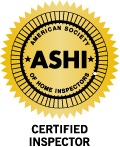Advanced Home InspectionsHome, Radon, and Wood Destroying Insect Inspections for Central Nebraska |
Mold Inspections
Ten Things You Should Know About Mold.1. Potential health effects and symptoms associated with mold exposures include allergic reactions, asthma, and other respiratory complaints. 2. There is no practical way to eliminate all mold and mold spores in the indoor environment; the way to control indoor mold growth is to control moisture. 3. If mold is a problem in your home or school, you must clean up the mold and eliminate sources of moisture. 4. Fix the source of the water problem or leak to prevent mold growth. 5. Reduce indoor humidity (to 30-60%) to decrease mold growth by: venting bathrooms, dryers, and other moisture-generating sources to the outside; using air conditioners and de-humidifiers; increasing ventilation; and using exhaust fans whenever cooking, dishwashing, and cleaning. 6. Clean and dry any damp or wet building materials and furnishings within 24-48 hours to prevent mold growth. 7. Clean mold off hard surfaces with water and detergent, and dry completely. Absorbent materials such as ceiling tiles, that are moldy, may need to be replaced. 8. Prevent condensation: Reduce the potential for condensation on cold surfaces (i.e., windows, piping, exterior walls, roof, or floors) by adding insulation. 9. In areas where there is a perpetual moisture problem, do not install carpeting (i.e., by drinking fountains, by classroom sinks, or on concrete floors with leaks or frequent condensation). 10. Molds can be found almost anywhere; they can grow on virtually any substance, providing moisture is present. There are molds that can grow on wood, paper, carpet, and foods. What does a Mold Inspection Consist of?Exterior There are numerous places to inspect for mold. The first is to visually inspect all areas of the property. It begins with the exterior of the property. Is there debris that is present next to and around the home? This includes inspection of the roof, the gutters and the drainage of the property. These areas can be a breeding place for mold. Basements and Crawl Spaces These areas are probably the most prone to have mold. Here again the visual inspection is very important. The 3 things that mold needs to have to grow are very often found here. It is important to inspect for moisture that might be getting into these areas. If there has been water in the basement or crawl space in the past, it is important that these are inspected for any mold. It is also important that these remain dry to prevent mold from growing, now or in the future. Main Living Areas of the Home In the kitchen, bathroom(s) and laundry area, it is important to look for water leaks and water stains around all the plumbing. This includes under the sinks, around bathtub and shower areas. These areas are very susceptible to mold because of the amount of water used here. It is also important to have good ventilation in the bathroom to prevent condensation on the ceiling and walls. In all areas of the home it is important to inspect all the windows and window frames. The windows can have condensation on them and this moisture will run onto the frame and this will produce mold. Testing for MoldThere are several ways to test for mold. 1. Air Sample – This is done by using a pump and collecting air into a canister and sending this to a laboratory for analysis. 2. Tape Sample-This is used to collect an actual sample of mold and send it to a laboratory. 3. Swab Sample-This method is used to get into hard to reach places to get a sample to send to the laboratory. The price for a mold inspection depends on the type of inspection that is needed and how many samples are taken and sent to the laboratory. |
